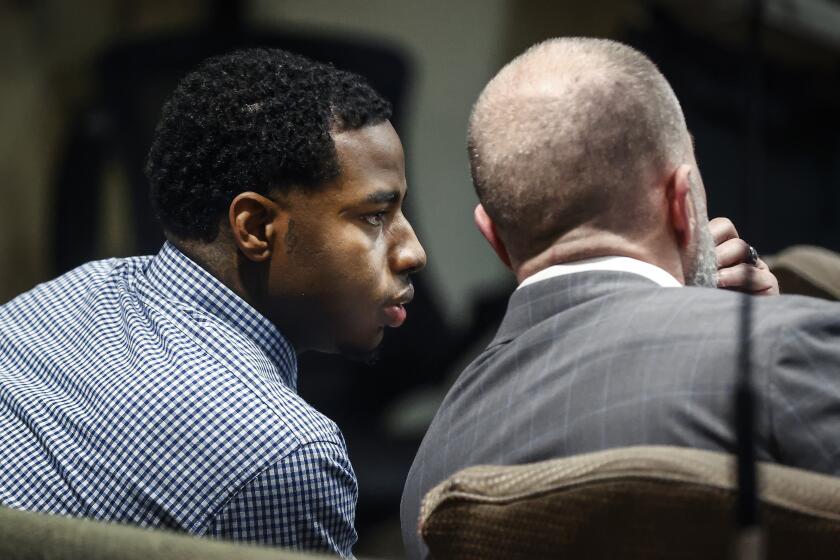Review: Filling the Hollywood Bowl with the ‘Musique de France’

Now about to start his sixth season at the head of the Seattle Symphony, Ludovic Morlot has been compiling a distinctly adventurous profile on the orchestra’s record label, emphasizing 20th and 21st century French and American music.
The biggest project so far has been a beautifully played three-CD box set of the orchestral music of Henri Dutilleux, released last month for the late composer’s centenary. Not to mention a lot of Ives, some Varèse and Elliott Carter, and, for the Cantaloupe label, a John Luther Adams soundscape.
That all might be a little too adventurous for the populist agenda of the Hollywood Bowl — even for what has been a more-inventive-than-usual season. Yet Morlot was still able to steer Tuesday night’s program with the Los Angeles Philharmonic toward his French specialties. And not always predictable ones.
SIGN UP for the free Essential Arts & Culture newsletter »
Morlot started out with a selection from his all-Fauré CD, “Masques et Bergamasques,” a piece that is hardly ever played live anywhere, let alone at the Bowl. You may wonder why, for this is a delightful, elegant, melodious, neoclassical suite drawn from a longer one-act theater piece that was patched together in 1919 from scraps of earlier Fauré works. Maybe the reason is just laziness, or fear of being out of fashion, on the part of conductors and impresarios. In any case, the L.A. Phil dispatched the suite with style and finesse.
The single-movement Saint-Saëns Cello Concerto No. 1 followed, featuring fellow Frenchman Gautier Capuçon as the soloist. On this chilly night, though, Capuçon and the sound system were not in top form; the cello’s tone had an unpleasant cutting edge, balanced too loudly over the orchestra, and Capuçon’s interpretation seemed rather blunt, even a bit frantic. Staying within the French theme of the evening, the encore, Massenet’s Meditation from “Thaïs,” fared considerably better as Capuçon ably caressed and sustained the line.

Though the evening got colder as it went along, the opening movement of Ravel’s “Rapsodie Espagnole” still sounded suitably sun-drenched, and Morlot established the right thrust of the swaying rhythms in the subsequent movements, the delicate colors emerging clearly through the loudspeakers. The final movement, “Feria,” exploded splendidly, with no preciousness in the central section. It was a distinguished performance all around.
Morlot also did a fine job with Ravel’s “La Valse” to close the evening. There wasn’t much in the way of nebulous dread in the opening measures, as Morlot emphasized French clarity instead of sonic fog. The fast waltz rhythm was clearly spelled out from the beginning and maintained throughout the piece, the beat kept firm and clear, with Morlot allowing himself only brief indulgences of rubato and a manically cranked-up tempo in the final seconds. I imagine that a complete recorded Ravel cycle by Morlot in Seattle would be quite competitive.
Follow The Times’ arts team @culturemonster.
More to Read
The biggest entertainment stories
Get our big stories about Hollywood, film, television, music, arts, culture and more right in your inbox as soon as they publish.
You may occasionally receive promotional content from the Los Angeles Times.










